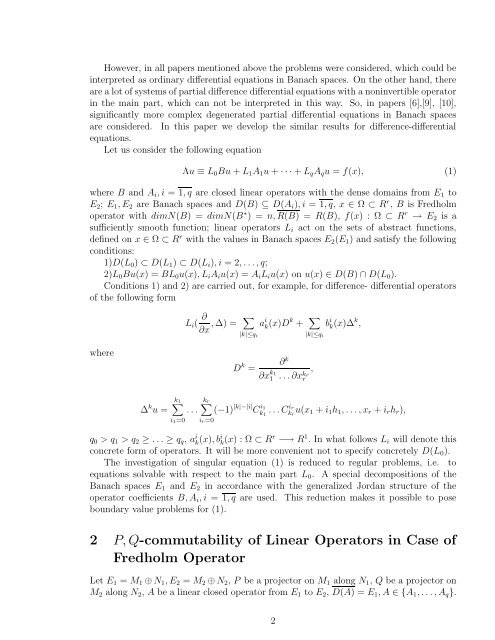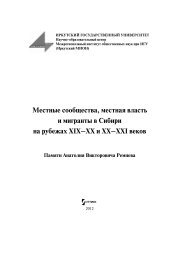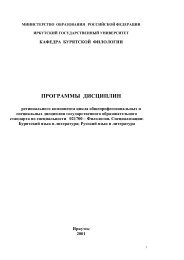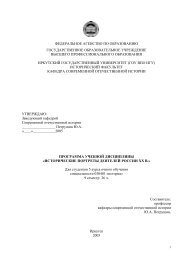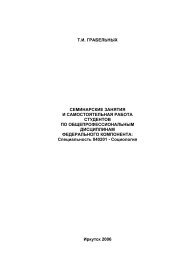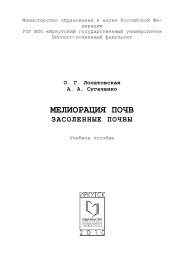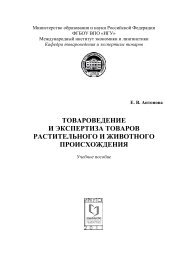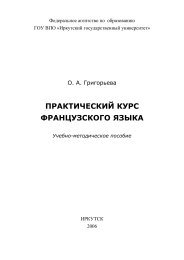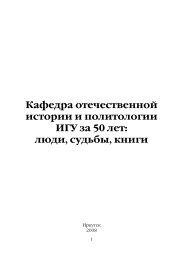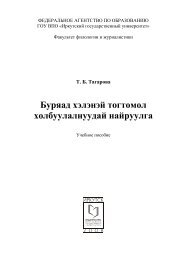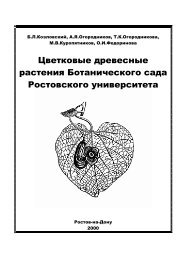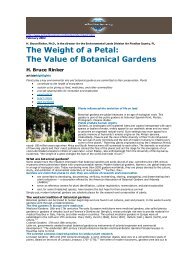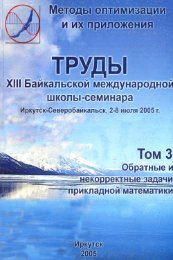Difference-differential Equations with Fredholm Operator in the Main ...
Difference-differential Equations with Fredholm Operator in the Main ...
Difference-differential Equations with Fredholm Operator in the Main ...
Create successful ePaper yourself
Turn your PDF publications into a flip-book with our unique Google optimized e-Paper software.
However, <strong>in</strong> all papers mentioned above <strong>the</strong> problems were considered, which could be<br />
<strong>in</strong>terpreted as ord<strong>in</strong>ary <strong>differential</strong> equations <strong>in</strong> Banach spaces. On <strong>the</strong> o<strong>the</strong>r hand, <strong>the</strong>re<br />
are a lot of systems of partial difference <strong>differential</strong> equations <strong>with</strong> a non<strong>in</strong>vertible operator<br />
<strong>in</strong> <strong>the</strong> ma<strong>in</strong> part, which can not be <strong>in</strong>terpreted <strong>in</strong> this way. So, <strong>in</strong> papers [6],[9], [10],<br />
significantly more complex degenerated partial <strong>differential</strong> equations <strong>in</strong> Banach spaces<br />
are considered. In this paper we develop <strong>the</strong> similar results for difference-<strong>differential</strong><br />
equations.<br />
Let us consider <strong>the</strong> follow<strong>in</strong>g equation<br />
Λu ≡ L 0 Bu + L 1 A 1 u + · · · + L q A q u = f(x), (1)<br />
where B and A i , i = 1, q are closed l<strong>in</strong>ear operators <strong>with</strong> <strong>the</strong> dense doma<strong>in</strong>s from E 1 to<br />
E 2 ; E 1 , E 2 are Banach spaces and D(B) ⊆ D(A i ), i = 1, q, x ∈ Ω ⊂ R r , B is <strong>Fredholm</strong><br />
operator <strong>with</strong> dimN(B) = dimN(B ∗ ) = n, R(B) = R(B), f(x) : Ω ⊂ R r → E 2 is a<br />
sufficiently smooth function; l<strong>in</strong>ear operators L i act on <strong>the</strong> sets of abstract functions,<br />
def<strong>in</strong>ed on x ∈ Ω ⊂ R r <strong>with</strong> <strong>the</strong> values <strong>in</strong> Banach spaces E 2 (E 1 ) and satisfy <strong>the</strong> follow<strong>in</strong>g<br />
conditions:<br />
1)D(L 0 ) ⊂ D(L 1 ) ⊂ D(L i ), i = 2, . . . , q;<br />
2)L 0 Bu(x) = BL 0 u(x), L i A i u(x) = A i L i u(x) on u(x) ∈ D(B) ∩ D(L 0 ).<br />
Conditions 1) and 2) are carried out, for example, for difference- <strong>differential</strong> operators<br />
of <strong>the</strong> follow<strong>in</strong>g form<br />
L i ( ∂<br />
∂x , ∆) = ∑<br />
|k|≤q i<br />
a i k (x)Dk + ∑<br />
|k|≤q i<br />
b i k (x)∆k ,<br />
where<br />
D k =<br />
∂ k<br />
∂x k ,<br />
1<br />
1 . . . ∂x kr<br />
r<br />
∆ k u =<br />
k 1 ∑<br />
i 1 =0<br />
k r<br />
∑<br />
. . . (−1) |k|−|i| C i 1<br />
k 1<br />
. . . C ir<br />
k r<br />
u(x 1 + i 1 h 1 , . . . , x r + i r h r ),<br />
i r=0<br />
q 0 > q 1 > q 2 ≥ . . . ≥ q q , a i k (x), bi k (x) : Ω ⊂ Rr −→ R 1 . In what follows L i will denote this<br />
concrete form of operators. It will be more convenient not to specify concretely D(L 0 ).<br />
The <strong>in</strong>vestigation of s<strong>in</strong>gular equation (1) is reduced to regular problems, i.e. to<br />
equations solvable <strong>with</strong> respect to <strong>the</strong> ma<strong>in</strong> part L 0 . A special decompositions of <strong>the</strong><br />
Banach spaces E 1 and E 2 <strong>in</strong> accordance <strong>with</strong> <strong>the</strong> generalized Jordan structure of <strong>the</strong><br />
operator coefficients B, A i , i = 1, q are used. This reduction makes it possible to pose<br />
boundary value problems for (1).<br />
2 P, Q-commutability of L<strong>in</strong>ear <strong>Operator</strong>s <strong>in</strong> Case of<br />
<strong>Fredholm</strong> <strong>Operator</strong><br />
Let E 1 = M 1 ⊕ N 1 , E 2 = M 2 ⊕ N 2 , P be a projector on M 1 along N 1 , Q be a projector on<br />
M 2 along N 2 , A be a l<strong>in</strong>ear closed operator from E 1 to E 2 , D(A) = E 1 , A ∈ {A 1 , . . . , A q }.<br />
2


